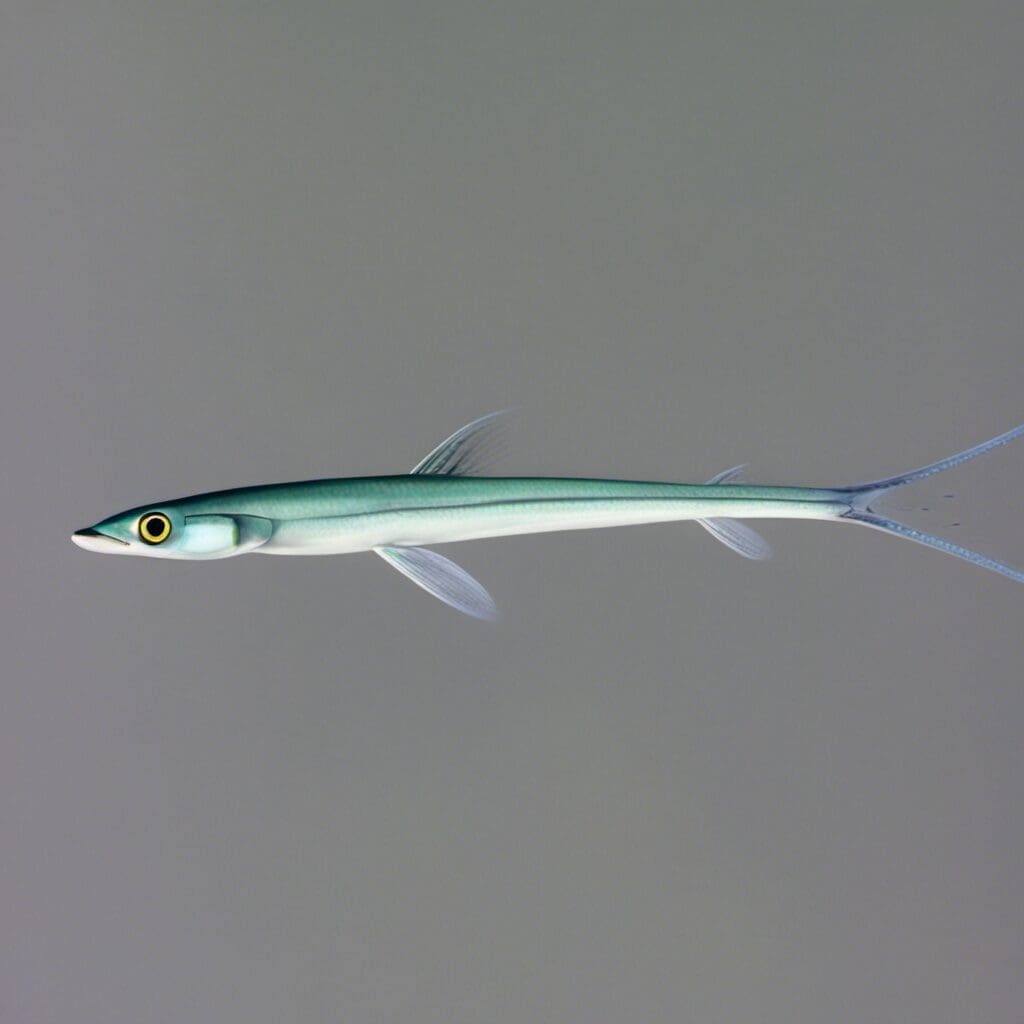Introduction
Species Name and Family Name
Needlefish belong to the family Belonidae, in the order Beloniformes. These long, slender fish are aptly named for their elongated, needle-like jaws, which are filled with sharp teeth.
Conservation Status
Current Status
Most species of needlefish are not currently under threat and are classified as Least Concern by the International Union for Conservation of Nature (IUCN).
Conservation Efforts
As many needlefish species are not currently endangered, there are minimal specific conservation efforts in place. However, broader marine conservation initiatives indirectly aid in their preservation by protecting their habitats and food sources.
Statistics
A breakdown of the general statistics on needlefish is as follows:
| Length (Average, Range) | 20-50 cm, up to 1.2 m |
| Weight (Average, Range) | 1-2 kg, up to 4.5 kg |
| Average Lifespan | Up to 8 years |
Distribution
Regions/Countries
Needlefish can be found in warm seas worldwide, particularly in the Atlantic, Pacific, and Indian Oceans.
Migration Patterns
Needlefish are generally not known to undertake long migrations, although they do move to different depths and areas within their range depending on the time of day and season.
Habitats
Water Type, Depth Range, Temperature Range
Needlefish generally inhabit near-surface coastal waters and are frequently found around estuaries and coral reefs. They are also known to enter freshwater rivers and brackish waters. They thrive in temperatures between 24°C (75°F) and 28°C (82°F).
When and Where to See
Seasonal Patterns, Time of Day
Needlefish can be seen throughout the year in their preferred habitats, usually near the surface of the water. They are more likely to be spotted during early morning and late afternoon, when they are most active.
Best Fishing Locations
While needlefish can be found worldwide, some exceptional fishing locations include:
- The Florida Keys, USA
- Baja Peninsula, Mexico
- Great Barrier Reef, Australia
- Andaman and Nicobar Islands, India
- Maldives
- Hawaiian Islands, USA
- Red Sea, Egypt
- Bahamas
- Bali, Indonesia
- Phuket, Thailand.
How to Catch
Preferred Bait or Lures
Small, flashy lures that mimic the small fish and shrimps needlefish feed on work best. Live baits such as shrimp can also be used.
Fishing Techniques
Fly-fishing, casting, and trolling are the most viable techniques to catch needlefish. Sight fishing is also possible due to their tendencies to swim near the surface.
Identification Guide
Needlefish are identifiable by their long and slim body, pointed beak-like jaws filled with sharp teeth, and green-blue or silver color. They can be distinguished from similar species like garfish and halfbeaks by their rounder bodies and the absence of a lower jaw extending beyond the upper jaw.
Culinary
How to Cook, Taste Profile, Nutritional Information
Needlefish can be cooked in a variety of ways, including grilling, roasting, and frying. They have a mild, sweet flavor and a low fat content, making them a healthy choice. They are rich in protein, vitamins, and minerals.
Additional Information
Behavior
Needlefish are carnivorous, feeding primarily on small fish and shrimps. They mate during spring and summer, with females scattering eggs that attach to seagrass or other submerged vegetation.
Predators and Threats
Predators of needlefish include larger fish like barracuda and sharks. Human activities like overfishing and pollution also pose threats.
Cultural/Historical Significance
In some parts of the world, needlefish are considered a symbol of good luck. In Japan, they are used in traditional New Year decorations.
References and Further Reading
- Fish Base – Needlefish
- Florida Museum - Needlefish
- Britannica – Needlefish
For in-depth study, refer to books like “Marine Fishes of Tropical Australia and South-east Asia” by Gerry Allen and “Fishes of the Open Ocean” by Julian Pepperell

